Home » Posts tagged 'Alicante coast'
Tag Archives: Alicante coast
Spanish Geological Congress in Avila
Our thinkinazul project Molico-CV presented three presentations at the XI Spanish Geological Congress held in Ávila (Spain) from July 1 to 6, 2024.
- A high energy event in the last 2000 years at Guardamar de Segura.
- The Seacliff of Morro de Toix (Alicante)
- The development of a homemade USV (Uncrewed Surface Vehicle). See the picture bellow.
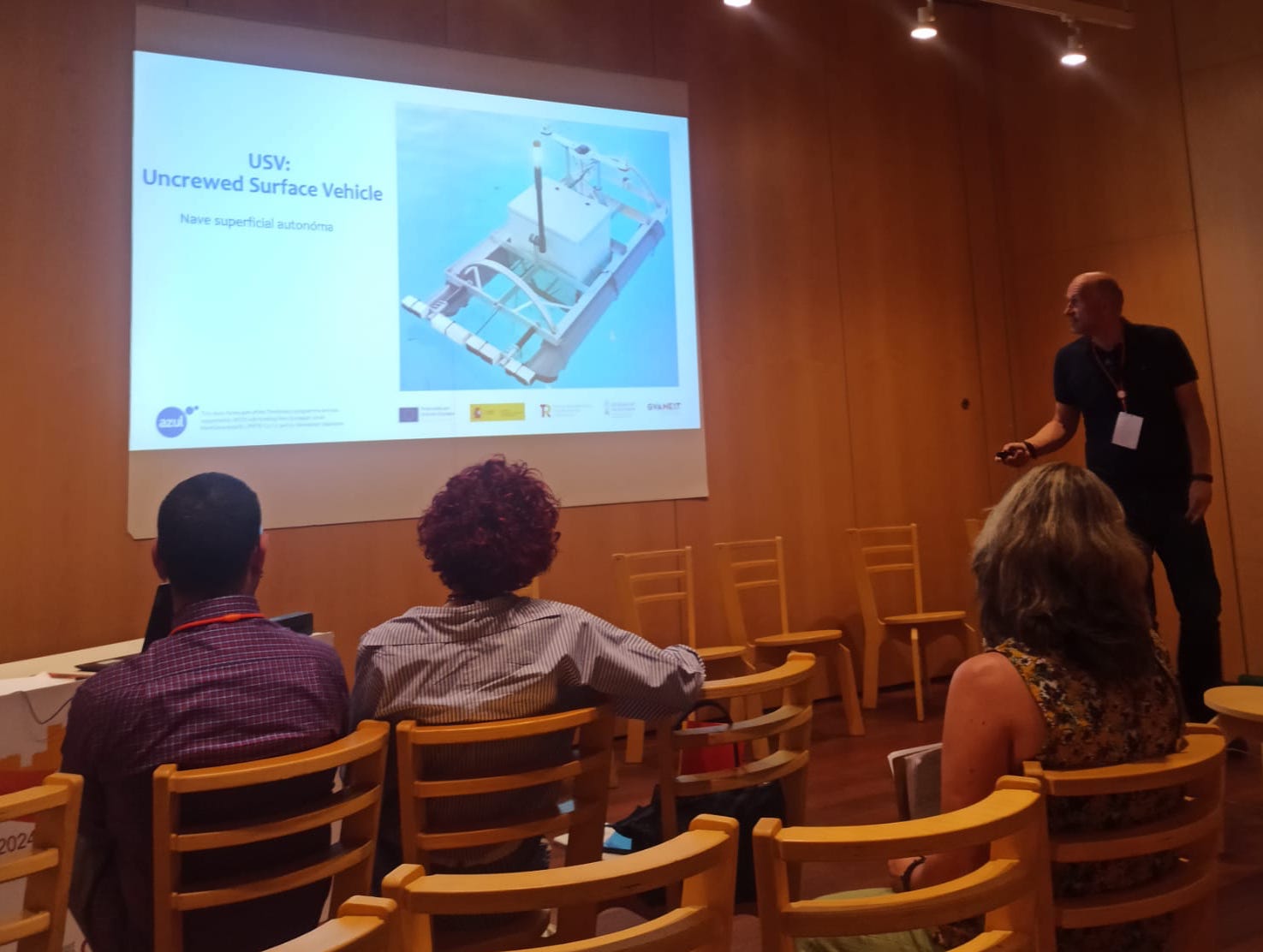
Works presented to the XI Spanish Geological Congress:
- Benabdeloued, B. Y. N., Ronda, J. L., Tent-Manclús, J. E., Bonomo, D. y Alcántara-Carrió, J. (2024): Desarrollo de un USV para trabajos costeros. Geotemas, 20: 46.
- Bonomo, D., Tent-Manclús, J. E., Alcántara-Carrió, J., Portantiolo Manzolli, R., Jordá Guijarro, J., Arteaga Cardineau, C., Navarro Pedreño, J., Jordan, M., y Narváez, C. R. (2024): Registro de un evento de alta energía en la planicie costera de Guardamar de Segura (Alicante, SE España). Geotemas, 20: 1132-1135.
- Tent-Manclús, J. E., Bonomo, D., Alcántara-Carrió, J. y Estévez, A. (2024): Evolución reciente del acantilado marino del Morro de Toix (Alicante, SE España). Geotemas, 20: 89-92.
Marine campaign to find the source of the earthquakes in the Patibulo fishing area (Alicante coast)
At 30 nautical miles to the E of Cabo de Santa Pola (about 55 km) there is a submarine seamount called by the southern Alicante fishermen as the area of the Patibulo (the Gallows). It is an area with a rocky and elevated seabed, with abundant fishing.
Curiously, not only are fish abundant, but from time to time the seismographs of the Alicante University Seismic Record Unit record earthquakes there and along the imaginary line that joins it with Cabo de Santa Pola, to the north of Tabarca Island. In the coastal area to the north of said island, an active fault has already been located through high-resolution seismic as a possible cause of these. It was missing to know if in the Patibulo, said fault continues or another one also active.
Throughout the year 2022, attempts have been made to reach the area from Torrevieja with marine seismic equipment to study the area. It started in the month of April and something always happened, a fuse, a cable, a blown chip, bad weather… After much insistence and returning empty-handed, on December 6, 7 and 8, there was a good weather window and the appliances worked. From the port of Torrevieja with the boat “Rosa de Abril”, we were making some data collection lines in the direction of the Patibulo and on the last day we reached our objective. Almost 80 km of data lines were obtained over 3 days.
El Patíbulo is the westernmost seamount of an alignment of elevations called Alicante Highs, after the geological map of the Alicante platform (Catafau Alcántara et al., 1994). There are at least three needles whose base is 300 m deep and which rise to about 135 m, the most to the W (Patíbulo). The second is the highest and reaches 125 m (some fishermen say 90 m), the third at 154 m. The image of the geological map of the Alicante platform is attached. To the north of these thresholds begins a submarine canyon that is “unofficially” known as the “Alicante canyon” and that descends to the plain to the north of these.
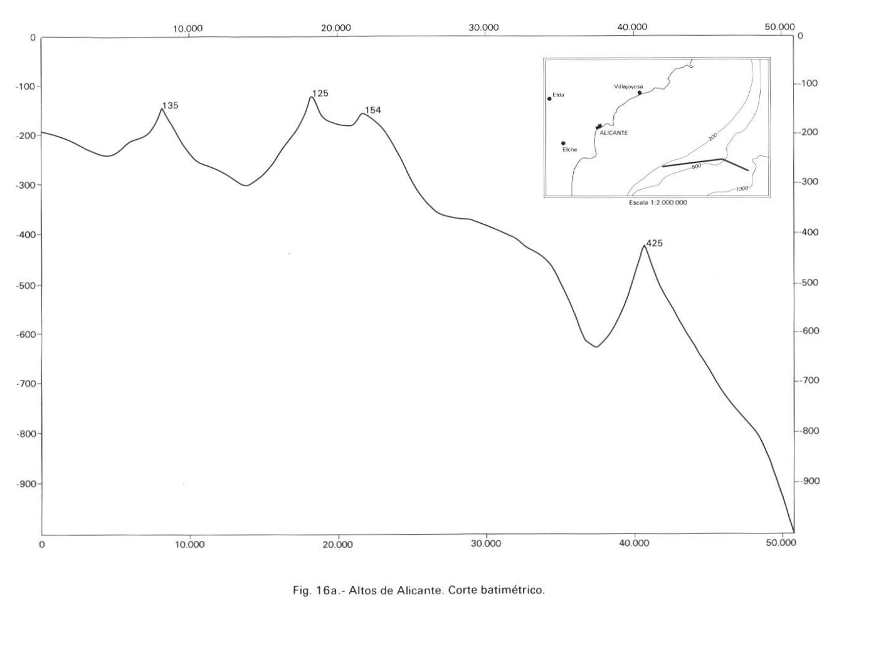
The high-resolution seismic image shows a fault scarp on the seafloor, indicating that the fault is currently active. The darker area marked by the plane is a more cemented area, probably due to the flow of fluids along the plane. Layered reflectors are also observed, indicating that they are sedimentary rocks and not volcanic rocks like other seamounts in the southern Balearic Islands.
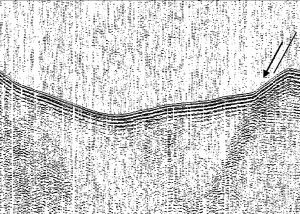
With the preliminary data that has been obtained, it can be said that the Patibulo is a structural height raised by faults. They are active because they protrude from the bottom and because it seems that they are associated with leaks of fluids that mineralize near the fault plane.
We look forward to studying the interesting data obtained.
Reference: Catafau Alcántara, E., Gaytán de Ayala y Bolín, M., Pereda Alonso, I., Vázquez Garrido, J.T., Wandossell Santamaría, J. (1994): Mapa geológico de la Plataforma Continental Española y Zonas adyacentes. Escala 1:200 000. Hoja nº 72-73(Elche-Alicante). ITGE, 73 p.
Thinkinazul project
Messinian Group will study the recent marine sediment on the Alicante coast. The new EU funded Thinkinazul project of the Generalitat Valenciana, coded as: GVA/Thinkinazul/2021/039.
The project will study changes in the coast-line, coastal risk and coastal aquifers. It has started on January 1, 2022 and will be active until November 18, 2024. The advances of the research will be announced in future posts of this blog. The leadership of the project is carried out by researches of the MIES is a Multidisciplinary Research Institute for Environmental Studies “Ramón Margalef” (Instituto Multidisciplinario para el estudio del Medio “Ramon Margalef”, IMEM in Spanish) of the Alicante University and integrate researches of 10 universities and research institutions.
Generalitat Valenciana Thinkinazul Project “aquaCHANGE” have been divided in 7 Working Party (WP) and framed in WP1: “Observation and monitoring of the marine and coastal environment”.

The development of the sinus illicitanus (II)
Change on the coastline of the Southern Alicante region
Tent-Manclús, J. E.
The Bajo Segura Region is a plain dominated by the Segura River with the mouth towards the Mediterranean Sea on Guardamar. The Hondón and Salinas de Santa Pola lagoons inside the plain, are the remains of a major marine bay known in the Roman times as the sinus ilicitanus. Offshore the Region geophysical data has permitted to model the coastline change and study the underwater marine terraces. 183 maps have been made from the 15000 BP until Today (100 year apart the older ones and 25 years for the recent ones). The coastline has migrated between 20 and 50 km onshore and then offshore about tens of meters to 35 km shaping today coastline. The sea level at 15000 BP was located 70 m below today sea-level (btsl). During the Younger Dryas (13500 to 11700 BP) varies around 60-66 m btsl then increase until 21 m btsl and stopped during the 8.2 ka event (8500 BP to 8200 BP). Again, the level increases first fast and then slowly but moving fast horizontally (near 35 km for 1000 years) developing the sinus ilicitanus when the marine transgression enters the plain about 4200 BC. The Segura River developed a delta in the today area of Orihuela, 35 km to the East of its today river mouth in Guardamar. The river until around the year 1400 AD developed a fingering (bird-foot) quite variable delta in the center of the sinus, most of the major irrigation canals (acequias) could correspond to the ancient delta-channels. Around the XV century major events changed the sinus basin producing the river mouth move to the present location. The sinus open communication with the Mediterranean Sea was closed around the XVIII century by sand bars, first the southern of Guardamar and then the northern on Santa Pola.
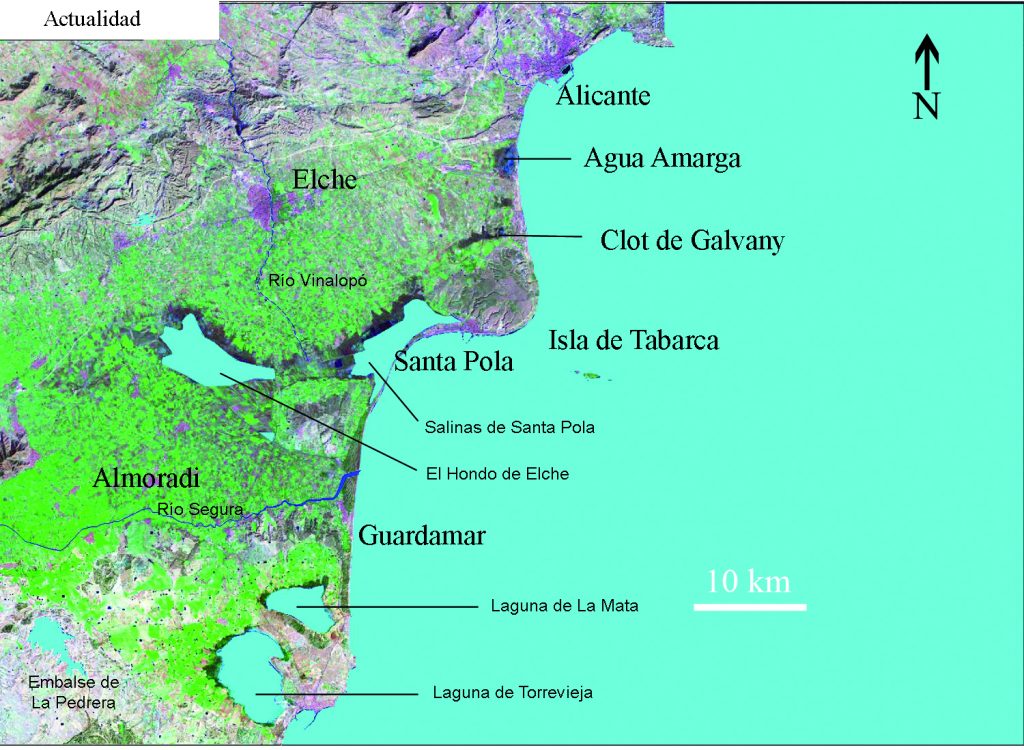
Cite as:
The development of the sinus illicitanus (I)
The change of the coastline in the southern part of the province of Alicante for the last 15,000 years have been modeled and described in the work of Tent-Manclus (2013). It is obtained by integrating data from different sources and especially high-resolution seismic profiles of the nearby marine continental shelf. Ten periods have been distinguished in the evolution of the Bajo Segura coastline : 1) 15000 BP- 14600 BP: rapid rise; 2) 14600 BP to 13500 BP: the Older Dryas, slow rise; 3) 13500 BP to 12700 BP: stability and descent; 4) 12700 BP to 11700 BP: the Younger Dryas, descent of the sea level; 5) 11700 BP to 11300 BP: very fast rise; 6) 11300 BP a 8500 BP: rapid rise; 7) 8500 BP = 6500 AC to 8200 BP = 6200 AC: 8.2 ka event stabilization; 8) 6,200 BC to 4,000 BC: rise, Tabarca Island is form; 9) 4000 BC to 3000 BC: the slow rise due to subsidence sinus ilicitanus forms and 10) 3000 BC to the present day 2000 AD: the sinus ilicitanus desiccates.

Maps at different times are show selected from the 164 maps that have been made. This is a first version of how the coastline evolves in the region. This work It can be a starting point to improve knowledge of the historical landscape evolution..
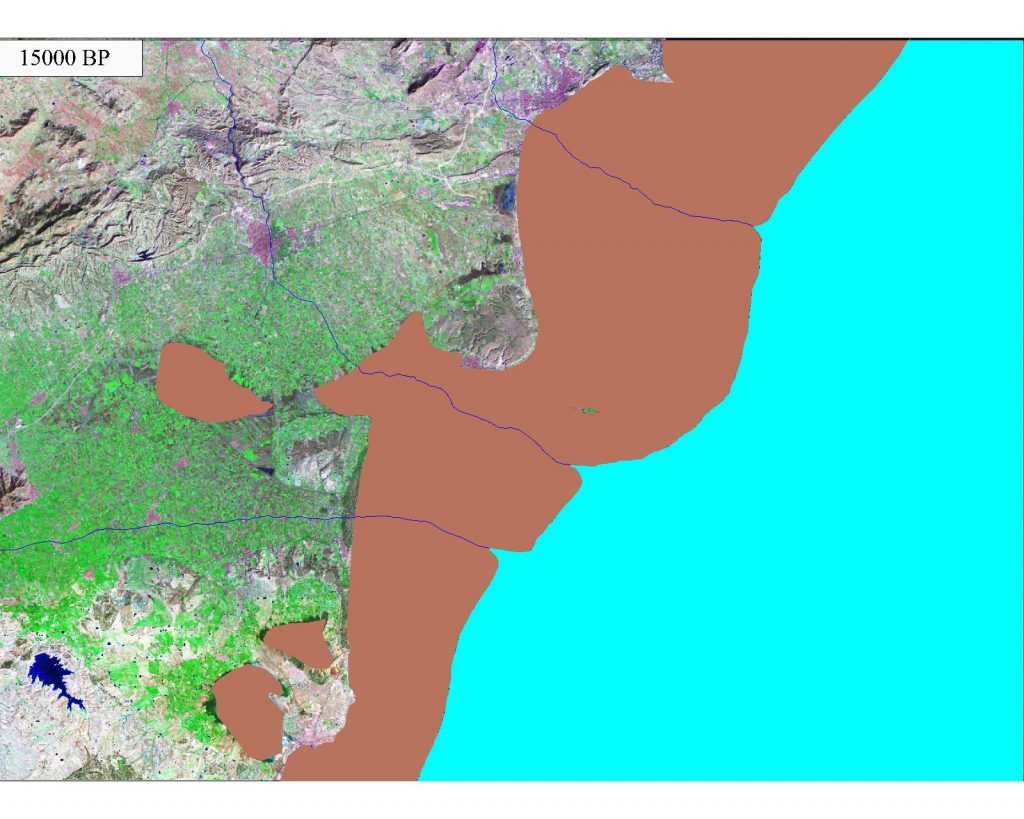
The sinus ilicitanus dries until today, the rest of which are the lagoons of the Fondo and Santa Polo Salinas.
Cite as: Tent-Manclús, J. E. (2013): Cambios de la línea de costa en el Bajo Segura (S de Alicante) en los últimos 15.000 años. Estudios geográficos, 74 (275): 684-702. Doi: 10.3989/estgeogr.201324

Recent Comments